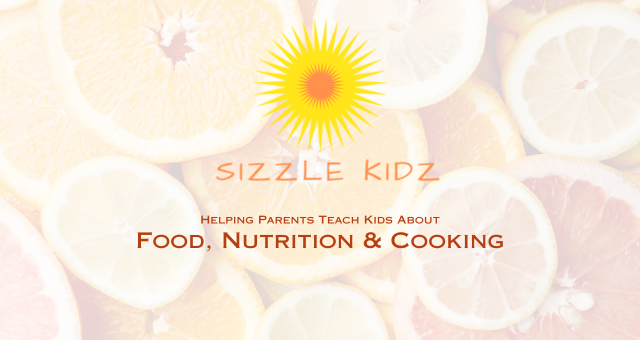This is what growing wheat stalks look like. Both white and whole wheat flour come from the same wheat stalks. The difference is in the amount of processing. RULE OF THUMB: Less processing = More nutrients (whole wheat flour); More processing = Less nutrients (white four).
- Wheat flour, is magical ingredient! It makes bread soft, pancakes fluffy and cakes light and airy!
- Wheat flour is special. It contains more gluten than other grains. Gluten makes baked goods light and airy. Gluten is in the news lately because some people have an allergic reaction to gluten.
- Gluten is made of strong, elastic proteins. Like rubber bands! The gluten forms a spider web structure throughout the dough, trapping the gases formed by yeast and baking powder. The trapped air helps the dough to rise, resulting in light, soft bread. Delicious chemistry!
- Wheat originated in the Tigris and Euphrates River Valley, near what is now Iraq.
- Today, wheat is grown on more land than any other crop, it covers over 545 million acres around the world!
- In 2020, the average American ate about 134 pounds of wheat flour. That’s enough to make 200 loaves of bread!
What’s the Deal With Kansas???
- Wheat is grown in 42 states in the US, but Kansas holds the #1 spot in flour milling in the United States.
- Kansas produces enough wheat each year to bake 36 BILLION loaves of bread and enough to feed everyone in the world, over six billion people, for about 2 weeks. GO KANSAS!
- An acre of Kansas wheat produces enough bread to feed nearly 9,000 people for one day. That area of the U.S. is known as “The Bread Basket”.
BOOM!!! BOOM!!! BOOM!!!
DO NOT try this yourself! Very dangerous! Just look it up on YouTube!!
- Did you know that flour dust suspended in the air is explosive?
- Flour explodes when its particles become suspended in the air in a dust cloud and are then ignited. The starch molecules burn quickly, their rapid expansion in the presence of heat causes an explosion. WOW!
- Excited to start crafting, but the glue ran out? Flour can be used to made a DIY glue or paste and Paper Mache. You can even make homemade Play Doh out of flour! Get crafty.
Click HERE to make your own glue or paper mâché!
Click HERE to make your own homemade play doh with flour!
Historically Cool Stuff About Wheat Flour!
- 30,000 years ago, cavemen made flour by grinding wheat between two stones.
- Ancient Romans created millstones making the job easier. The millstones were powered by animals, waterwheels or windmills.
- Until the early 1800s, growing and harvesting wheat didn’t differ very much from the methods in ancient Egypt. Over time though, human necessity and innovation made the whole process a ton easier! Here’s the progression from Ancient Egypt until now.
- Farmers harvested wheat by hand with a sickle, also known as “reaping”…you know…like the Grim Reaper we hear about in stories
- Stalks were tied by hand into bundles and waited the threshing.
- Threshing was done by livestock who trampled the stalks or farmers beat the stalks to loosen the grain from the stalks.
- Chaff was divided from the grain by throwing the stalks into the wind which blew the chaff away. This process was called “winnowing”.
- A reaping machine was patented in 1834 by Cyrus McCormick, an American inventor.
- The same year was invented a threshing machine. These machines made the harvest several times faster.
- The steam engine of the 1880’s and the internal combustion engine of the 1920’s replaced horses and cattle that pulled original machines and made harvest again faster and easier.
- In modern day, a Combine Tractor is used to to drive over the wheat stalks and harvest it for processing.
This is. modern Combine Tractor, used for harvesting wheat.
Types of White Wheat Flour include:
-Unbleached flour is simply flour that has not undergone bleaching and therefore does not have the color of “white” flour.
-Bleached flour has an added whitening agent.
-All-purpose flour is flour that does not have a leavening agent. This is the most common.
-Enriched flour is a flour with replaced flour nutrients that are lost during processing.
Some More Random Cool Stuff About Wheat Flour!
- Flour is classified by how much the grain has been processed— or milled.
- The degree of grinding determines the mineral content of the flour—the more the grain is milled, the lower the nutrient content since most of the minerals are found in the outer layer of the grain (the bran).
- Here’s a quick Rule of Thumb: finely milled or ‘soft’ flours have less protein (aka gluten) and are better for light cakes and pastry. More coarsely milled flours are higher in gluten and produce more course sticky doughs, leaving you with the elastic kinds of dough needed for bread.
- Carbohydrates (like wheat flour) are important for health and are the fuel our body like best! We can’t live without them, but we’d be healthier if we got most of our carbohydrates from “smart carbs” like fruits, vegetables, legumes, low-fat dairy, and whole grains.
- The bottom line: White, refined flour can be part of a healthy diet, but moderation is key.

Jill’s Jokes!!!
My kid wanted to be a super hero for Halloween but he got in trouble so I made him go as a sack of wheat flour.
Why did the baker mix in his flour slowly instead of doing it quickly?
He didn’t want to whisk it!!


What do you think?